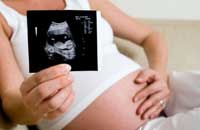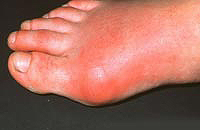In children, the expansion of kidney pellets, as a rule, happens congenital. What are the reasons for the expansion of pelvis? How to recognize and how to treat pyelectation? Read in this article.
Content
Renal lobckers
Renal lochs are cavities where watering from the kidneys. Watering in kidney pelvis gets from kidney cups. From Lohanok urine moves to the ureters, which transport it to the bladder.
Piilyectasia
Pioektasia is an expansion of renal pelvos (Pyelos (Greek.) – pelvis; ECTASIA – extension ). Children, as a rule, pyelectasia is congenital. If the cups are expanded together with lochanks, they are talking about pyelocalicoctasis or hydronephrotic transformation of the kidneys. If a ureter has been expanded with a locher, this condition is called ureteropelectation (ureter - ureter), megaureter or ureterohydronifroy. Pyelectasia 3-5 times more often found in boys than girls. Occurs both one-sided and double-sided pathology. Light forms of pyelectasia pass more often on their own, and heavy often require surgical treatment.
The reason for the expansion of kidney pelvis in the fetus
The reason for the expansion of the kidney pelvis is to increase the pressure of urine in the kidney due to the presence of an obstacle on the way of its outflow. Violation of urine outflow can be caused by the narrowing of the urinary tract below the pelvis, reverse the urine cast from the bladder (bubble-ureteral reflux), as well as high pressure in the bladder. Pyelectation of the fetus is established with a conventional ultrasound study from 16-20 weeks of pregnancy.
Danger of Piilyectsia
Piilyectasia is a manifestation of disadvantage in the urinary system. Difficulty of urine outflow from the kidney can increase, causing compression, atrophy of the renal tissue and reducing the kidney function. In addition, violation of the outflow of urine is often accompanied by the addition of pyelonephritis – kidney inflammation, worsening her condition and leading kidney sclerosis.
Obstacle for urine outflow
Often an obstacle to the outflow of urine from the kidneys is the narrowing of the ureter at the jetty transition site in the ureter, or when the ureter is pushed into the bladder. The narrowing of the ureter may be due to its underdevelopment or compression outside with additional education (vessel, spikes, tumor). Less often, the cause of the violation of the outflow of urine from the pelvis is the formation of a valve in the region of a laughter-ureter transition (high removal of the ureter). Increased pressure in the bladder, resulting in disruption of the nervous supply of the bladder (neurogenic bladder) or as a result of the formation of the valve of the urethra, may also make it difficult to outflow of urine from the renal loin.
Causes of Piilyectsia
The most common cause of the violation of the outflow of urine from pelvis is the opposite reverse stream of urine from the bladder – Bubble uretera reflux. Under normal conditions, a bubble-urete reflux is hampered by a valve mechanism that exists in the place of blasting of the ureter in the bladder. When reflux, the valve does not work and urine while reducing the bladder rushes up the ureter.
Congenital pathology of the urinary system may have a genetic nature or arising from harmful effects on the body of the mother and the fetus during pregnancy.
Diagnostic methods used in pyelectasia in the newborn
 In case of unrearly pronounced pyelectation, it is enough to carry out regular ultrasound research (ultrasound), every three months. With the addition of urinary infection or increasing the degree of pyelectation, a complete urological examination is shown, including radiological research methods: cystography, excretory (intravenous) urography, radioisotope examination of the kidneys. These methods allow you to determine the diagnosis - determine the level, degree and cause of violation of the outflow of urine, as well as assign a reasonable treatment. In itself, research results are not a sentence, uniquely determining the fate of the child. The decision on the management of the patient takes an experienced urologist, as a rule, on the basis of the child's observation, the analysis of the causes and severity of the disease.
In case of unrearly pronounced pyelectation, it is enough to carry out regular ultrasound research (ultrasound), every three months. With the addition of urinary infection or increasing the degree of pyelectation, a complete urological examination is shown, including radiological research methods: cystography, excretory (intravenous) urography, radioisotope examination of the kidneys. These methods allow you to determine the diagnosis - determine the level, degree and cause of violation of the outflow of urine, as well as assign a reasonable treatment. In itself, research results are not a sentence, uniquely determining the fate of the child. The decision on the management of the patient takes an experienced urologist, as a rule, on the basis of the child's observation, the analysis of the causes and severity of the disease.
These diagnoses put on the basis of a survey
Some examples of frequently found diseases are accompanied by pyelectasia:
- Hydronephrosis, caused by an obstacle (obstruction) in the field of laughter-ureter transition. Manifests itself with a sharp expansion of pelvis without expansion of the ureter.
- Bubble uretera reflux - Reverse urine stream from the bladder in the kidney. Manifested by significant changes in the size of the pelvis during ultrasound studies and even in the process of one study.
- Megaureter – The sharp expansion of the ureter can accompany pyelectation. Causes: Bubble-ureteral reflux is a large extent, the narrowing of the ureter in the lower part, high pressure in the bladder and DR.
- Valves rear urethra in boys. With ultrasound, double-sided pyelectasia, the expansion of ureters.
- Ectopia of the ureter – The blasting of the ureter is not in the bladder, but in the urethra in boys or the vagina in girls. It often happens when doubling the kidney and accompanied by pyelectasia of the upper segment of doubled kidney
- Ureterocele – ureter when pumped into the bladder will break in the form of a bubble, and its outlet is narrowed. With ultrasound, an additional cavity is visible in the wake of the bladder and often pyelectasia on the same side.
Treatment of pyelectasia
In many children, small pyelectasia disappears spontaneously as a result of the ripening of the organs of the urinary system after the birth of a child. In some cases, conservative treatment is required.
Treatment depends on the severity and causes of the disease. Children with an unfinished and medium degree of pyelectasia can be observed from an experienced specialist and receive the necessary treatment, waiting for the disappearance or reduction of the degree of pyelectation.
Operational treatment requires 25-40% of cases. Currently there is no method that allows you to predict whether pyelectasia will increase after the child's birth. The question of the testimony for operation is solved during the observation and survey. In cases of pronounced pyelectation, if the extension of the pelvis progresses, and the kidney function is reduced, surgical treatment is shown. Surgical operations allow you to eliminate an obstacle or bubble-ureteral reflux. Some operational interventions can successfully be performed by endoscopic methods – Without an open operation, with miniature instruments entered through the urethra. Information on the principles of operations in the relevant sections (bubble-ureteral reflux, hydronephrosis, megaureter).









